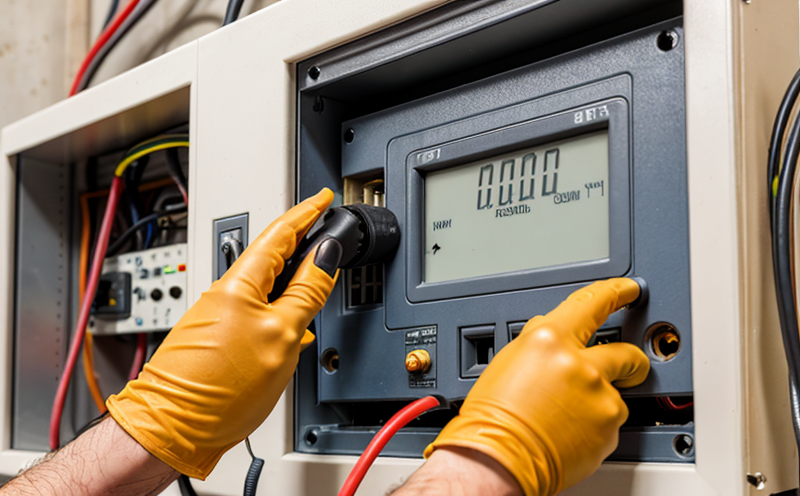IEC 62660-3 Electrical and Functional Testing of Lithium-Ion Cells for EVs
The International Electrotechnical Commission (IEC) standard IEC 62660-3 is a critical document that provides detailed guidance on the electrical and functional testing of lithium-ion cells intended for use in electric vehicles (EVs). This standard ensures that the cells meet stringent performance, safety, and durability requirements, which are essential for reliable EV operation.
The importance of this standard cannot be overstated. As the world transitions to more sustainable forms of transportation, the quality and reliability of lithium-ion batteries used in these vehicles have become paramount. IEC 62660-3 plays a crucial role by outlining comprehensive testing procedures that help manufacturers identify potential issues early in the development process, ensuring safer and more efficient EVs.
The standard covers a wide range of tests that are critical to assessing the electrical performance, thermal stability, and mechanical integrity of lithium-ion cells. These tests include but are not limited to charge-discharge cycles, impedance measurements, internal resistance checks, and accelerated aging tests. Each test is designed to simulate real-world conditions as closely as possible while providing insights into the cell's behavior under stress.
One of the key aspects of IEC 62660-3 is its focus on safety. The standard addresses potential hazards such as short circuits, overcharging, and thermal runaway by incorporating testing protocols that evaluate each cell’s ability to withstand these conditions without failure. This emphasis on safety ensures that EVs can operate safely in various environments and under different driving conditions.
The scope of IEC 62660-3 extends beyond just the battery cells themselves. It also includes guidelines for integrating these cells into larger systems, such as battery packs, which are a crucial component of an EV’s powertrain. The standard ensures that not only individual cells but also entire battery modules meet stringent safety and performance standards.
For R&D engineers and quality managers working in the automotive sector, compliance with IEC 62660-3 is essential for ensuring that products meet regulatory requirements and industry best practices. Compliance officers will find this standard invaluable as it provides a clear framework for testing and certification processes. In summary, IEC 62660-3 is not just a technical document; it is a cornerstone of the EV battery development process.
Scope and Methodology
The scope and methodology outlined in IEC 62660-3 are designed to ensure that lithium-ion cells used in electric vehicles meet the highest safety, performance, and reliability standards. Below is a summary of some key methodologies:
| Methodology | Description |
|---|---|
| Charge-Discharge Cycles | The standard specifies the number of cycles required to test the longevity and performance of lithium-ion cells. |
| Impedance Measurements | This involves measuring the internal resistance of the cell, which helps in identifying any potential issues early on. |
| Internal Resistance Checks | The standard sets out specific thresholds for acceptable levels of internal resistance to ensure safe operation. |
| Accelerated Aging Tests | This test simulates the effects of time and temperature on the cell, ensuring it remains stable over its expected lifespan. |
The methodology also includes detailed procedures for preparing samples and conducting tests. These procedures are designed to ensure consistency and accuracy in testing results across different laboratories and manufacturers.
Benefits
Ensures compliance with international standards, enhancing product reliability and safety.
Identifies potential issues early in the development process, reducing costs and time to market.
Provides a clear framework for testing and certification processes, simplifying regulatory compliance.
Ensures consistent quality across different manufacturers and laboratories.
Supports continuous improvement in product design through detailed performance data.
Facilitates safer operation of EVs by ensuring that cells can withstand various stress conditions without failure.
The benefits extend to the entire supply chain, from raw material suppliers to end-users. By adhering to IEC 62660-3, manufacturers can build trust with their customers and ensure long-term partnerships through consistent quality and reliability.
International Acceptance and Recognition
The acceptance of IEC standards, including IEC 62660-3, is widespread in the global automotive industry. Many countries have adopted these standards as part of their regulatory frameworks for electric vehicles. The standard’s rigorous testing protocols and emphasis on safety make it a preferred choice among manufacturers.
Automakers like Tesla, Nissan, and Volkswagen are known to use IEC 62660-3 in their development processes. Compliance with this standard not only ensures that the batteries meet global safety standards but also opens up markets where these standards are required for sale.
The international recognition of IEC 62660-3 is further enhanced by its alignment with other relevant standards such as ISO and ASTM. This interoperability ensures that manufacturers can use a consistent set of guidelines across different regions, simplifying the global supply chain.





